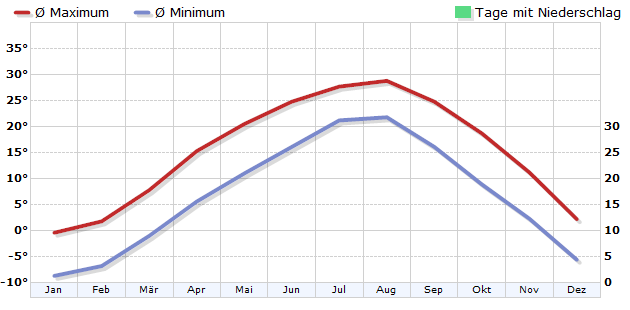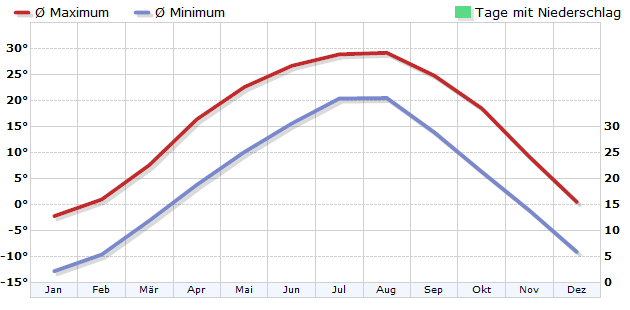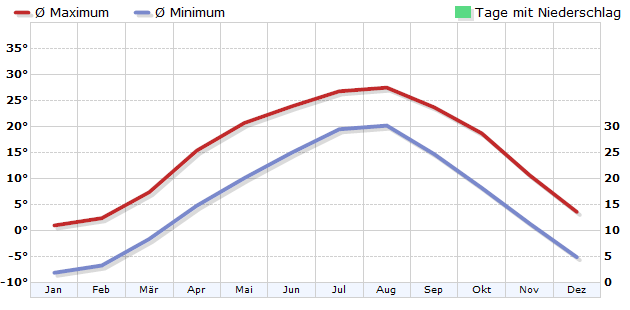Climate North Korea
North Korea has a temperate continental climate with four distinct seasons. In the long winters, cold air masses from Siberia cause icy temperatures. In the north, the lows can drop below minus 30 degrees. Between the end of November and mid-February, the average temperatures are predominantly in the frost zone. However, precipitation is usually rare and occurs in small quantities. In the summer months, the southwest monsoon brings warm and humid air masses and provides the major part of the annual precipitation. The average maximum values in summer are between 24 and 29 degrees. The transitional seasons spring and autumn are quite short. They are characterised by mild temperatures and changing winds. Rainfall is not as high as in the summer months, but greater than in winter. The annual precipitation sums lie between 700 to 800 mm in the north as well as in the interior and up to 1300 mm in the southwest of the country. In summer, North Korea can be hit by typhoons.
For trips to North Korea you should use the months of May, June, September or October. Then the temperatures and the weather are usually pleasant.




